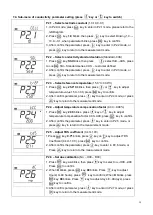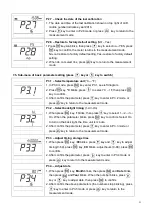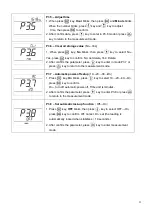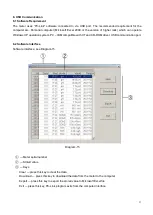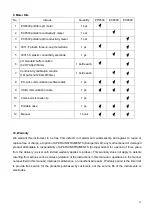
16
Chart
– 11 Commonly used TDS conversion factors
Conductivity of solution
TDS conversion factor
0-100
μS/cm
0.60
100-1,000
μS/cm
0.71
1-10 mS/cm
0.81
10-100 mS/cm
0.94
6.5. Customer-Defined Calibration (take 10.50
μS/cm standard solution as an example)
6.5.1 Select
CUS
per parameter P2.2 (please refer to clause 7.4 for customer-defined solution). The meter
enters into Customer-defined calibration mode.
6.5.2.
Rinse the electrode in pure water, allow it to dry, and submerge it in 10.50
μS/cm standard solution. Stir
the solution briefly and allow it to stay in the solution until a stable reading is reached and icon appears
on LCD. Press key or key to adjust the measuring value to 10.50
μS/cm, Press key to calibrate
the meter. meter returns to the measurement mode. In conductivity measurement mode with
customer-defined calibration, the meter does not display electrode calibration guide icon.
Notes:
Note: If use the conductivity electrode without temperature sensor ( manual temperature
compensation (MTC)), when press key, the temperature value flashes. Press key or key
to adjust the temperature value, and press key, then the conductivity value flashes.
6.5.3. Only one-point calibration for customer-defined calibration. The value set in
“Customer-defined” is at a
fixed temperature. There is no regulation of temperature coefficient and reference temperature. The meter
has to perform calibration and measurement at the same temperature to avoid large error. The meter cannot
recognize customer-defined calibration solution.
6.6. Sample test
6.6.1. Rinse conductivity electrode in pure water, allow it to dry, and submerge it in the sample solution. Stir
the solution briefly and allow it to stay in the sample solution until a stable reading is reached and
icon appears on LCD, then get the reading value which is the conductivity value of the solution.
6.6.2. Press key to switch to TDS and salinity.
6.6.3. During the process of calibration and measurement, the meter has self-diagnosis functions,
indicating the relative information as below: chart
– 12.



















